Already August

Photo by Yakuta Poonawalla
Summer’s here in full swing, which means our parks are buzzing with activity, and often covered in fog! But don’t let that discourage you from heading out and enjoying your favorite park site—the Golden Gate National Recreation Area is beautiful in full sun or covered in mist.
And if you’d like to help with restoring your favorite parks, come out and join us, we work fog or shine. Enjoy the rest of your summer, and we hope to see you soon!
Announcements
Are you an aquatic fanatic? Come join us Friday, August 11, from 1–4 PM to learn about the mysterious and diverse world of plants that live submerged in freshwater lakes and ponds! Spend some time studying real samples of aquatic plants, and put everything into context of ecology and current work in this field. Click here for more information!
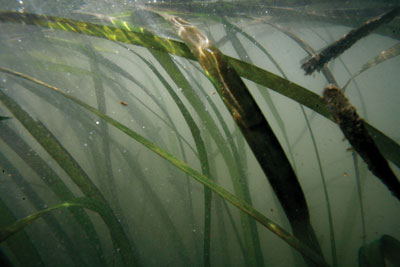
Photo by San Francisco Bay Subtidal Habitat Goals Project
In order to celebrate diversity and build community with our staff, volunteers, and visitors, we have teamed up with TurnOut, an organization dedicated to connecting volunteers to LGBTQIA+ causes.
Join us on Saturday, August 19 from 10 AM–1 PM to help restore and improve vital habitat for the coho salmon and other wildlife through a restoration project at Muir Beach. Click here for more information.

Parks Conservancy photo
Attention all aspiring geologists! Join UC Davis Soil Scientist Dr. Vic Claassen and Claire Mooney, Deputy Director of the Parks Conservancy's Design and Planning Department, on Saturday, August 19 from 10 AM–12:30 PM to learn more about the geology of West Peak, and how this informs restoration alternatives.
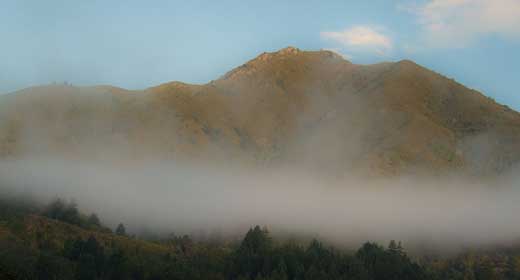
Photo by Gary Yost
Join Ranger Amy Kaplan on Sunday, August 20 from 3–6 PM for a writing workshop at Muir Woods that explores the relationship between place and you—and you and place. The workshop includes a short tour of Muir Woods. Recommended for ages 16+. Click here to make your reservation!

Photo Courtesy of NatureFind
Join Ranger Al Blank on Saturday, August 26 from 10 AM–Noon for a tour of Fort Baker and learn the many layers of history in the area! Dress in layers and bring comfortable walking shoes. Meet in front of the Bay Area Discovery Museum. Click here to make your reservation!

Parks Conservancy Photo
Flower Power!
By Tanya Vincent
Ecological Restoration and Volunteer Management Intern
If you’ve been out to visit your Golden Gate National Parks this month, there is no doubt that you have borne witness to the exuberant colors of the many unique wildflowers that are painting our native landscapes from San Mateo to Marin.
Although we have reached the conclusion of our annual wildflower walks, we are still so excited to share some cool facts about these botanical beauties!
Below is a list of some of my favorite native plants that call the Golden Gate National Recreation Area their home:
1. Yarrow (Achillea millifolium)
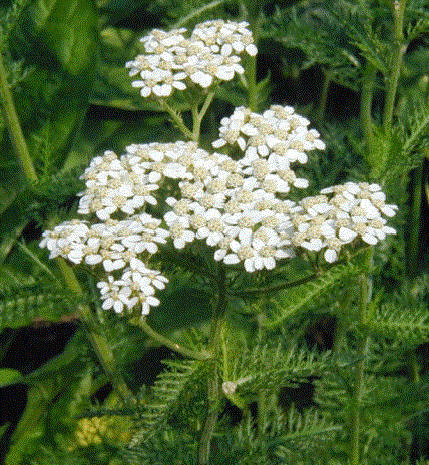
|
| Photo Courtesy of Herb Wisdom |
This fragrant, fuzzy plant has had many uses throughout history—from medicine to restoration. Yarrow’s genus name, Achillea, is derived from the legend of the Greek hero, Achilles; it is said that he carried yarrow around to cure the wounds of his Myrmidon warriors during the siege of Troy.
When mashed into a poultice, the leaves of this plant can be applied to cuts, rashes, sprains, and bruises to prevent infection and swelling. Centuries later, this multi-functional plant has become one of the oldest and best known medicines still in use worldwide.
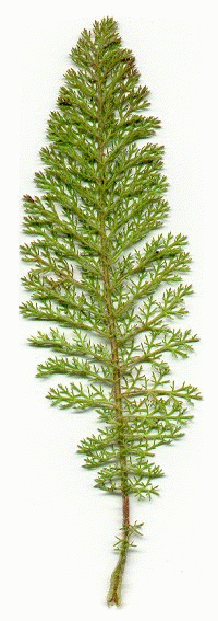
|
| Photo Courtesy of Discover Life |
Additionally, yarrow—or as I like to call it, “nature’s Band-Aid”—is known throughout Europe to be a love charm. In Britain and Holland, it was rumored that if you twirl a yarrow leaf in one of your nostrils three times and your nose bleeds, you are sure to get your sweetheart. And today, in Switzerland, yarrow is used instead of hops for making beer!
Finally, from a restoration perspective, yarrow is perfect for our coastal ecosystems. The highly dissected, fuzzy leaves of this plant allow it to decrease the amount of surface area that is exposed to the sun.
This is a cool plant adaptation to prevent evapotranspiration from the leaves’ pores. For this reason, yarrow is an incredibly drought-tolerant, hardy plant that we love to plant with our volunteers during our revegetation projects.
Throughout this species’ evolutionary history, yarrow has been able to achieve the perfect balance of leaf surface area so that it is large enough to receive adequate sunlight to photosynthesize, but not too large that it is vulnerable to overheating and water loss. Plants are amazing like that!
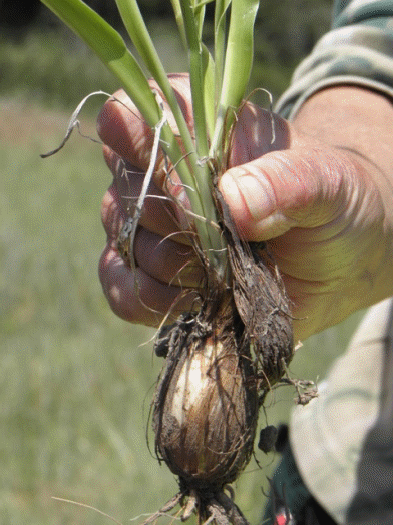
|
| Photo Courtesy of Edible Monterey Bay |
2. Soap root (Chloragalum pomeridianum)
Soap root, also known as soap plant, is another extremely useful plant throughout cultural history.
The native Ohlone tribes of the Bay Area used this plant for—you guessed it—soap! This plant has a fibrous root that surrounds a hard, inner bulb. The bulb was used by the Native Americans much like a bar of soap.
When mashed, this bulb became a paste to cure poison oak rashes and skin sores. The outer fibers were also utilized, often made into paint brushes and hair combs.
Chemicals called saponins give this root its lathering, soap-like quality. This chemical was also beneficial to the Ohlone peoples’ fish harvest. They would simply throw mashed bulbs into standing pools of water, stupefying the fish to the surface to be easily collected.
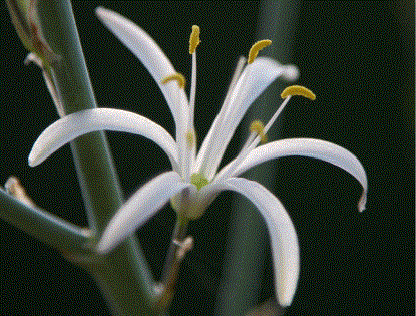
|
| Photo Courtesy of USDA Forest Service |
Soap root’s species name, pomeridianum, is Latin for “post-meridian” and refers to the fact that soap plant’s flower blossoms in the late-afternoon, one flower at a time. The flower stays open all night and is pollinated by nocturnal pollinators such as moths, flies, or beetles. This flower only lasts one night and expires the next day, only to be replaced by a new flower the following afternoon.
3. Bee plant (Scrophularia californica)
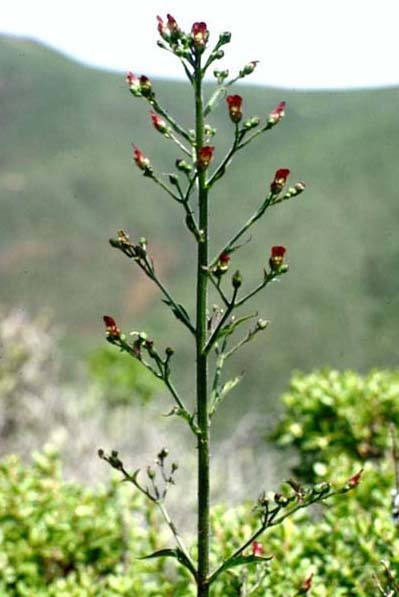
|
| Photo Courtesy of Montara Mountain Plants |
Like its name would suggest, bee plant is a very strong bee attractant, and is used throughout our parks as a pollinator restorer! The genus name, Scrophularia, is derived from the word scrofula.
Scrofula refers to a variety of skin diseases that caused swelling of the lymph nodes and weird growths all over the neck and back. This disease was a form of tuberculosis that was rampant in the Middle Ages, and it was thought that the only cure was the touch of a King or Queen. That is, until they discovered the plants of the Scrophularia genus, which proved to be the more practical treatments.

|
| Photo Courtesy of US Fish and Wildlife Service |
Bee plant is endemic to California, meaning it can only be found here! And this plant is equipped with some pretty cool adaptations. For example, bee plant has a class of compounds called Iridoids that have a similar chemical composition to catnip. These chemicals give the plant a bitter taste, which is thought to have evolved in response to grazing pressure. Pretty clever!
Bee plant is also remarkable because it is a host plant for the checkerspot butterfly. And, the presence of poisonous chemicals called glycosides allows bee plant to be the “host with the most.” The butterfly lays its eggs on the bee plant, so when the caterpillar emerges and eats its leaves, it becomes equipped with a protective layer of poison to shield both the caterpillar and the butterfly from predation. Plants are so cool!
Tick, Tick, Boom
By Katie Fitzgerald
Ecological Restoration and Volunteer Management Academic Intern
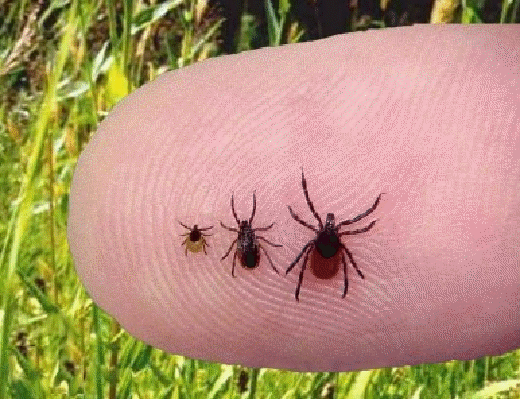
|
| Photo Courtesy of California Department of Public Health |
Summer brings on so much joy. We may have summer trips planned, summer concerts to rock out to, or park picnics to enjoy. With so much fun we must also consider what’s lurking outdoors. I’m talking about ticks.
With all these heavy rains we are seeing more greenery, which these eight-legged arachnids absolutely love. We are seeing a lot out in the field and we suggest anyone out hiking to wear long sleeves, long socks, walk in the middle of the trail, and, if you want to look real classy, tuck the bottom of your pant legs into your socks.
After a day outdoors, it’s advised to do a tick check, which includes doing a thorough inspection of your body. In particular, the warm places of your body such as you underarms, neck, and ankles. Take a shower after getting home and wash the clothes you were wearing.
Ticks may carry diseases with them, so it is always best to keep safe.
Interestingly, the Western fence lizard is a favorite of ticks to latch onto, and the lizard has something in its blood that kills the Lyme disease-causing bacteria ticks commonly carry. And if needed, this is another great example of the importance of biodiversity. This could potentially help with immunization of humans in the future.
Enjoy your summer and keep safe!

|
| Photo by Nick Regent |
Lastly, I would like to say my goodbyes to you, the readers of this newsletter. As an academic intern, I have had an incredible opportunity to work with the Parks Conservancy, an opportunity that I will forever cherish.
I had the pleasure of meeting some incredible people along this journey. The volunteers who attended our programs have fueled my passion for the world and protecting its environment. You all have warmed my heart and filled it with hope for the future.
I hope, in some way, I was able to give you even just a fraction of what you all have given me. Hope to see you all out in field soon!
Take care all! It’s been real.

Selfie by Tanya Vincent
Highlights from the Field: June-July
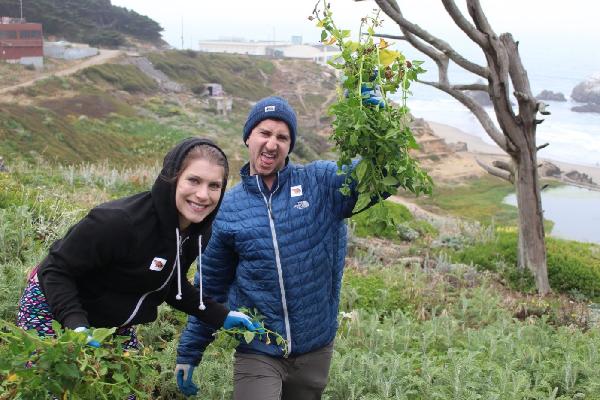
Photo by Aimee Erlich
Lands End
- Removed 130 bags of invasive weeds!
- Took out 127.5 bags of wild radish
- Worked with 40 youth stewards
- Laid 11 bales of rice straw mulch
Presidio Coastal Bluffs
- Cleared 70.5 bags of weeds!
- Worked with 3 hard-working corporate groups
Check out our Flickr page for pictures from volunteer workdays!
Drop-In Volunteer Programs
|
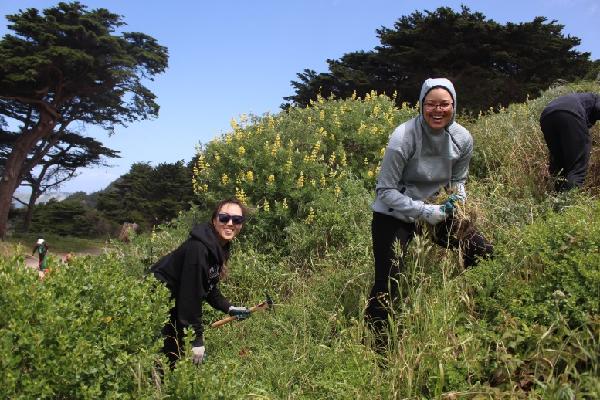
Photo by Yakuta Poonawalla
Volunteer on Thursdays:
Presidio Coastal Bluffs, 1–4 pm
August 3, 10, 17, 24
Lobos Creek, 1–4 pm
August 31
|

Photo by Tanya Vincent
Volunteer on Saturdays:
Lands End, 1–4 PM
August 5, 12, 19, 26
|
Click here to find our volunteer workday schedule.
|
See you in the field!

|